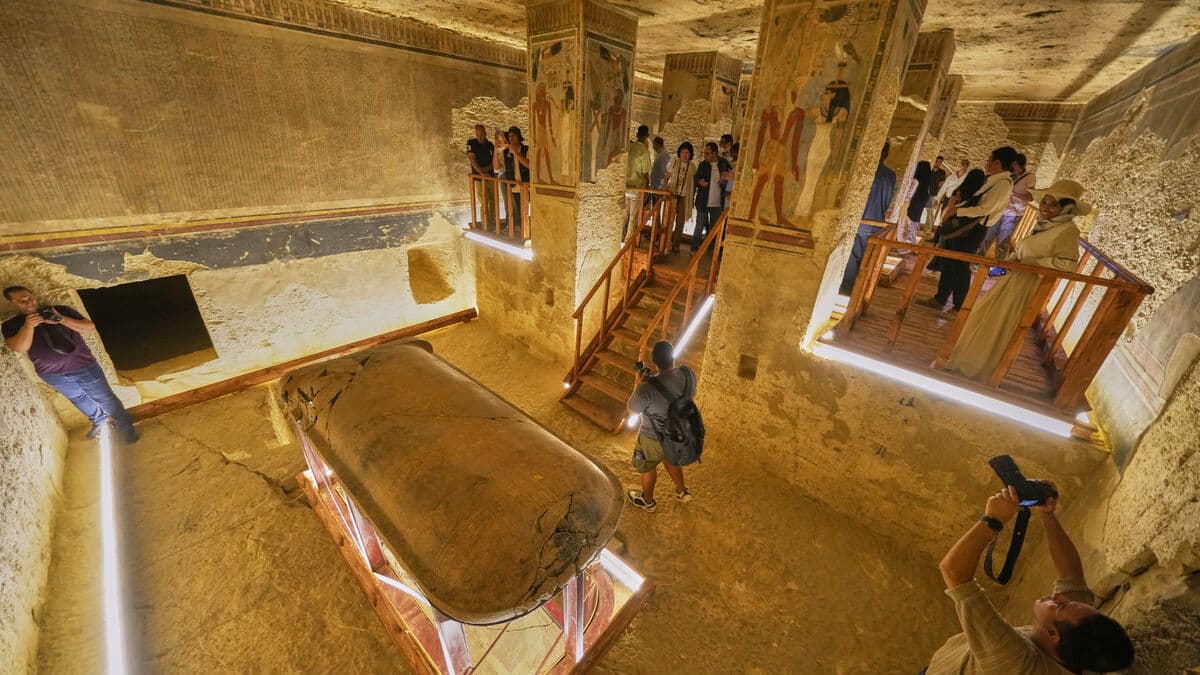Over 260 experts have been involved in the UNESCO-led restoration of the tomb chamber.
The wall paintings in the enormous space, with particularly striking elements of light blue color, are described as "the most exquisite" examples of their kind from Egypt's eighteenth dynasty.
Visitors during Saturday's press viewing could also admire the sarcophagus's colossal lid – which, unlike the chamber's other treasures, survived centuries of looting due to its weight.
The first recorded documentation of the tomb chamber was made in 1799 during Napoleon's invasion of Egypt. Subsequent French and British excavations meant that large parts of the tomb chamber's contents were taken to Western museums such as the Louvre in Paris, the Metropolitan in New York, and the English Highclere Castle.
Amenhotep III's mummy is however at the National Museum of Egyptian Civilization in Cairo.
Pharaoh ascended to the throne as a teenager and ruled for four decades during a period described as flourishing, stable and artistically superior.
He died in his fifties around 1350 before our calendar, and was buried in the famous Valley of the Kings in southern Egypt.





